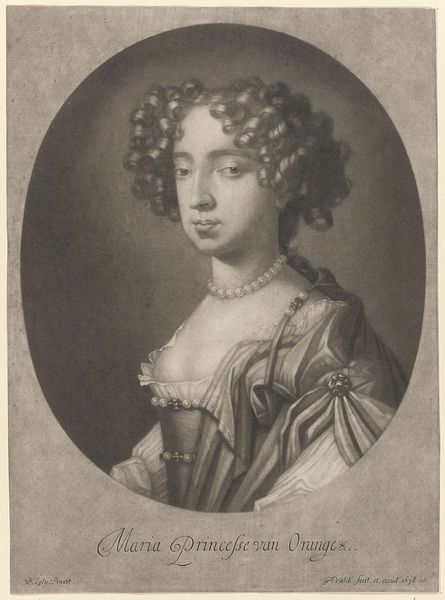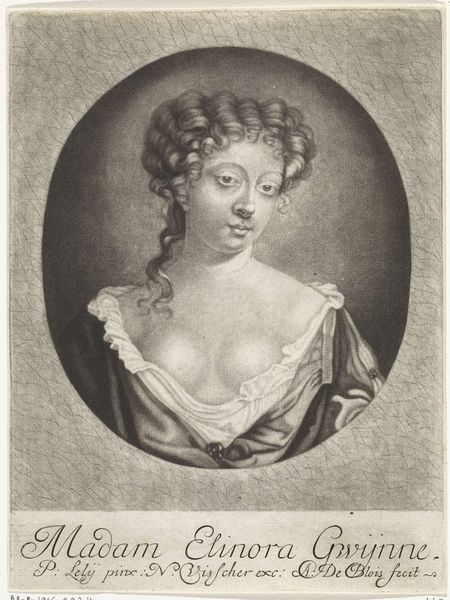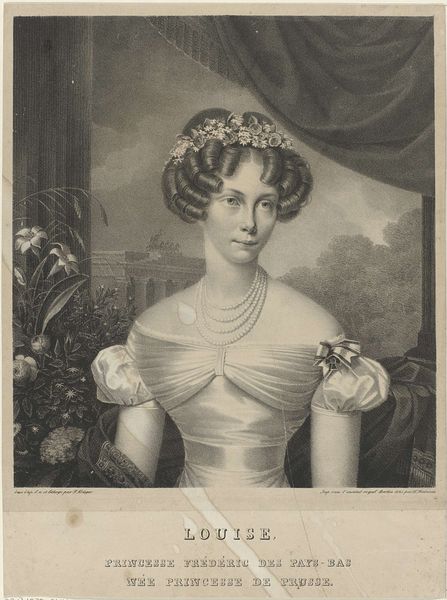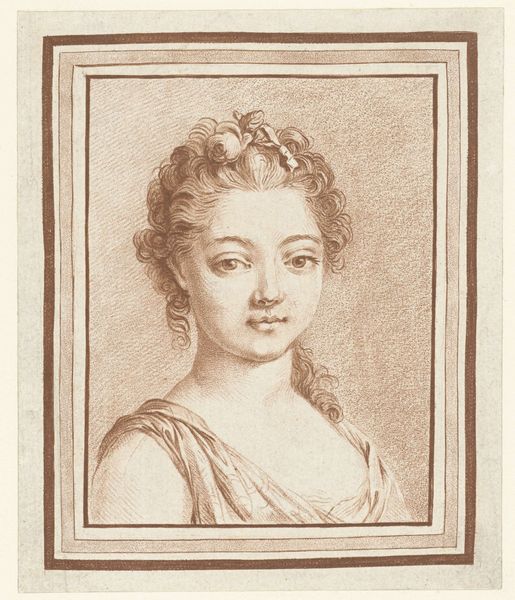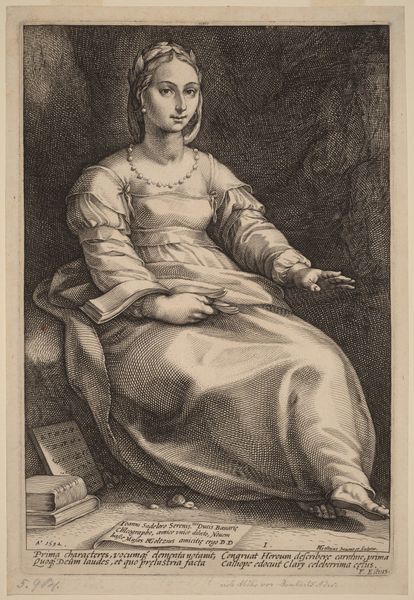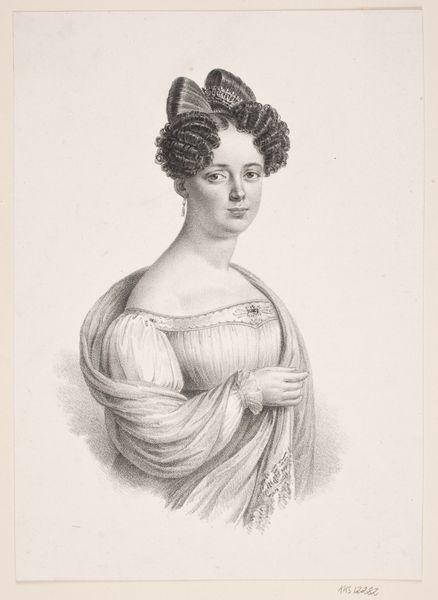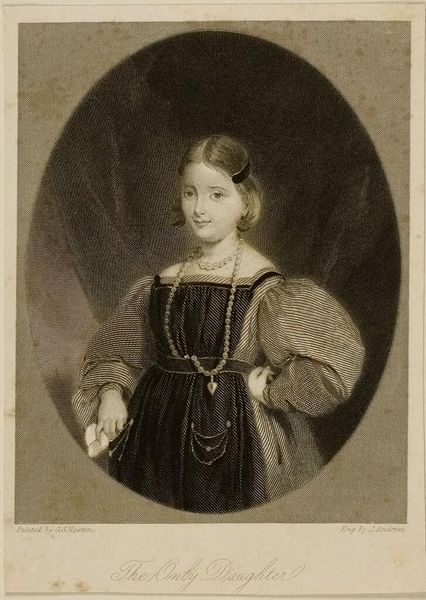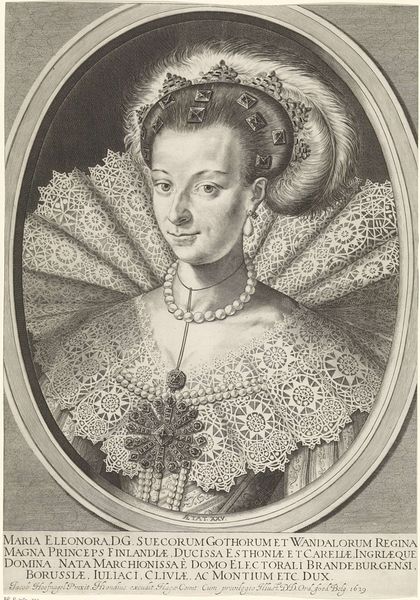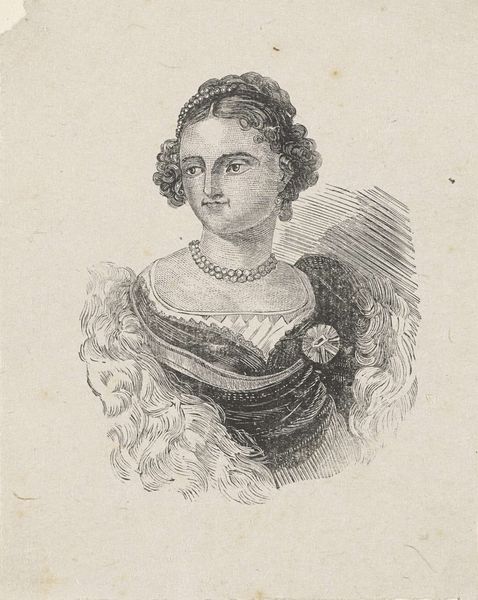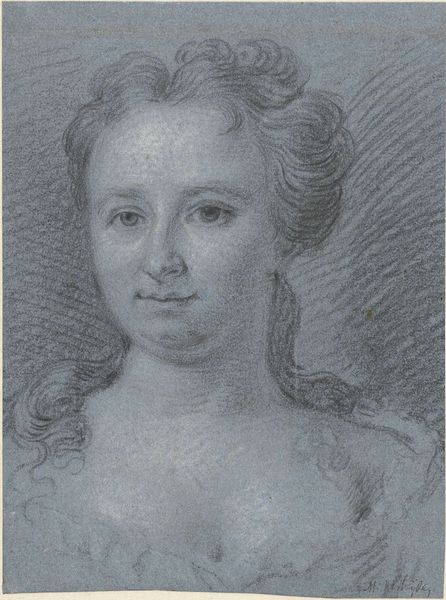
drawing, print, engraving
#
portrait
#
drawing
#
neoclacissism
# print
#
engraving
Dimensions: height 115 mm, width 80 mm
Copyright: Rijks Museum: Open Domain
Curator: Henriëtte, Archduchess of Austria, Princess of Nassau. This engraving by J. Rémon captures the young royal, a woman of considerable influence, between 1815 and 1899, rendered through meticulous lines. Editor: It's the kind of portrait where you sense the weight of history, almost a photographic memory filtered through the artist's hand. So proper and yet... distant? Curator: Precisely. The pearl jewelry, the tightly curled hairstyle—symbols of status, yes, but within Neoclassical portraiture, they also speak to concepts of order, virtue, and ideal beauty. The pearls, for instance, represent purity. Editor: I wonder, though, about this sense of confinement. It's probably due to the limited tonal range, mostly shades of gray. But beyond the clear social expectations, what do we imagine she was feeling at the time? Does the rendering style impose control and social expectations even to the depiction of feelings? Curator: Engraving was considered a controlled medium, favored for disseminating idealized images. Her slight smile could indicate compliance. Her steady gaze hints at intellect, a personality waiting to be expressed in a way that accords to a particular standard, a set of expected and required signs. Editor: I see that. Though there is something modern in her eyes; almost like a contemporary girl, as though she was photo-shopped in to an old time. Maybe the work is speaking about power and powerlessness at the same time. Curator: That tension between individual and ideal is a recurring theme within portraits, especially within Neoclassical. It reflects the values of the age but offers subtle clues, allowing for subjective expression. Editor: Looking again, I appreciate how Rémon captures light – those tiny dots of darkness, giving it an otherworldly appearance. Curator: The print, and engraving techniques are masterful to translate the aesthetic values of Neoclassicism, emphasizing linearity, balance, and decorum. That tension you mention could reflect the subject, and maybe the moment when social and psychological modern aspects where starting to emerge. Editor: It certainly is. Now, it has me wondering if those formal requirements aren’t, ironically, part of what keeps the portrait relevant—a window into another world and way of seeing.
Comments
No comments
Be the first to comment and join the conversation on the ultimate creative platform.
